Portugal created a maritime empire, an empire that relied not on the conquest of land and territories but rested on naval superiority, an empire formed by ephemeral sea routes and fragile harbours of support, like those of Ilha de Mozambique, Santa Helena and Terceira. So, unlike the Spanish empire, nothing substantial remains of this former empire on land. Till now, the Portuguese colonial expansion has been studied principally from its architectural evidence and from the documentary evidence left by its major participants or by the contemporary observers of the process. But nothing is known about the true instrument of the Portuguese expansion: the Portuguese built ship. Spanish shipfindsThe Emanuel Point (0), Rye A wreck, Cattewater wreck (1), Molasses Reef wreck (2), Highborn Cay wreck (3), Western Ledge Reef wreck (4), San Esteban (5), San Juan (6) and the San Diego (7) are all examples of archaeologically researched Iberian vessels that represent the Spanish part of the Peninsula. Spanish galizabra, 1589. Archivo General de Simancas Portuguese shipfindsAll Portuguese shipwrecks discovered so far – Boudeuse Cay wreck (8), Santo Antonio (9), Santiago (10), São Joao (11), São Bento (12), São Gonçalo, Santissimo Sacramento A, Nossa Senhora da Atalaia do Pinheiro (13) – either do not have any substantial wood remains or the structure was not recorded as has happened with the Santissimo Sacramento B (14).
So, in the end, the only Portuguese ship that has undergone a proper archaeological record and that had enough structural evidence to give us an insight into Portuguese shipbuilding practice is the frigate Santo Antonio de Tanna (1697), sunk at Mombasa, Kenya (15). Unfortunately, this ship was built at Bassein in India and dates to a period of decadence in the Portuguese Empire. The period during which a cycle of crucial transformations begun at the end of the medieval era in the history of the techniques of European naval construction is simply not registered until yet in Portuguese shipbuilding. Only now, some wrecks found in mainland Portugal have begun to cover that gap. Still unidentified, but with a strong presumption that all were Portuguese built, Aveiro A (16), Corpo Santo (17), Cais do Sodré (18) and São Julião da Barra 2 (19) have confirmed some data that was present in some of the naval treatises written by Portuguese scholars.
DocumentsThese documents (20) include theoretical treatises – the Latin book “Ars Nautica” (c. 1570) and “Livro da Fabrica das Naus” (c. 1580) (21) both by Fernando Oliveira – the theoretical-practical texts – the anonymous “Tratado do que deve de saber um bom soldado para ser bom capitao de mar e guerra”, the “Livro Primeiro da Architectura Naval” by Joao Baptista Lavanha (c. 1614) (22) and the “Advertencias de navegantes” by Marcos Aguiar (c. 1640) – and the practical texts – “Livro de Tracas de Carpintaria” by Manuel Fernandes (1616), the compilation “Livro Nautico” (c. 1590) and the manuscript by Gonçalo de Sousa “Coriosidades” (c. 1632). The majority of these documents were written while Portugal was united with Spain (1580-1641). How did the Iberian union affected both nautical schools? How was the Iberian shipbuilding affected by the new materials and the new techniques found all over the known world? To resume it all, what does constitute a true Portuguese shipbuilding tradition if there is such a thing? To complicate further an already complex subject, the constructive place of origin of a ship – the place where the ship was actually built – may differ from the place where the ship was registered, or even where the owner lived – the ship legal place of origin. Even these two definitions might not agree with the economic place of origin – the place where the ship was fitted out for her last voyage and where the crew embarked (23). So, when a Spanish owned ship is found it does not mean that it was built in Spain. As an example, the Spanish used ships from as different origins as Naples, Venice and Ragusa/Dubrovnik from the 1588 Armada (24). Also, between 1550 and 1650, Spain used on the Carreira das Indias ships from the Low Countries, Caribbean, North America and Central America, Portugal, England, France and Northern Europe (25). Anyhow, wreck artefacts, as clearly demonstrated by Piet Kleij mostly point out only to the economic place of origin, although some low rate of circulation artefacts carried on. So, where does all of this lead us? The bottom line is this: the situation of the archaeological discoveries relative to ships of Iberian origin is greatly biased towards the Spanish construction techniques. Even when a wreck presents what has come be known as distinct features of the Iberian-Atlantic shipbuilding tradition (26), one will have a very difficult time trying to ascertain her constructive origin. Some preliminary thoughts:
Ending this, fact is more Portuguese wrecks need to be studied until we can reach to any general conclusion regarding Iberian shipbuilding practices.
|
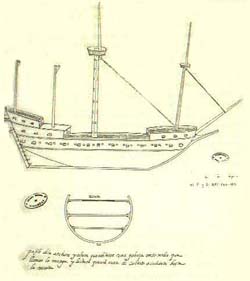
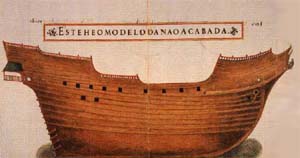
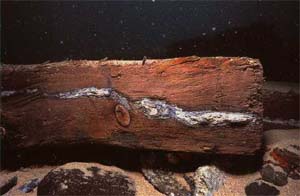
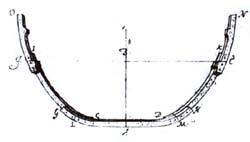
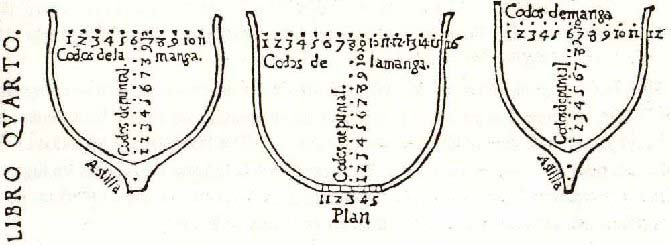
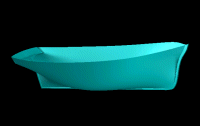 Back to Replicas & Shipbuilding
Back to Replicas & Shipbuilding Back to Nordic Underwater Archaeology
Back to Nordic Underwater Archaeology